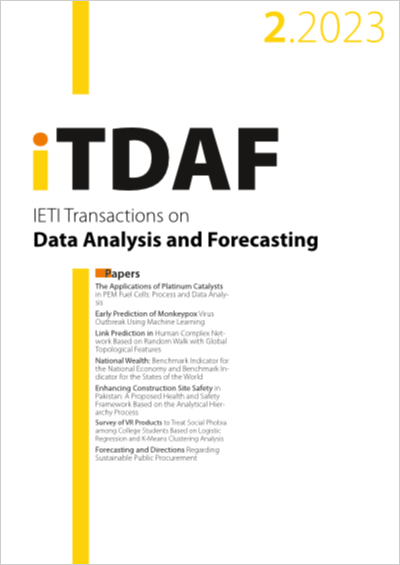Enhancing Construction Site Safety in Pakistan: A Proposed Health and Safety Framework Based on the Analytical Hierarchy Process
DOI:
https://doi.org/10.3991/itdaf.v1i2.41347Keywords:
Analytical Hierarchical Process, Construction Industry, Delphi method, Risk Management, Fuzzy Comprehensive EvaluationAbstract
Developing infrastructure is crucial for the economic growth of countries like Pakistan, which are facing financial challenges. However, the construction industry is complex and uncertain, with various associated risks. The purpose of this study is to develop a proactive health and safety strategy by identifying the risk factors that pose a threat to the safety of construction workers in Pakistan. Pairwise comparison matrices were constructed using the Analytical Hierarchy Process (AHP) approach for individual groups and the total sample. This process generated weights, consistency indices, and consistency ratios to validate the data. The fuzzy comprehensive evaluation method (FCEM) was used to evaluate the identified threats. Based on the identified health and safety risk factors, a general matrix, as well as first and second- level ambiguous relations were created. Additionally, a fuzzy comprehensive evaluation matrix was developed. The centesimal values of the goal layer were found to be higher (3.72) than the values of the factors, including unsafe acts (13.08), accidents and hazards (25.14), policies and management (12.15), managing workers at the worksite (6.12), and management of worksite (5.07). The results indicated that all these factors significantly affect health and security in construction projects. Based on these findings, corrective measures could be implemented at the strategic and planning levels to strengthen and regulate these barriers.
Downloads
Published
How to Cite
Issue
Section
License
Copyright (c) 2023 Saif ur rehman, XiaoYong Zhou, Guanhua Zhao, Areej Arif, Iqra Naeem

This work is licensed under a Creative Commons Attribution 4.0 International License.


